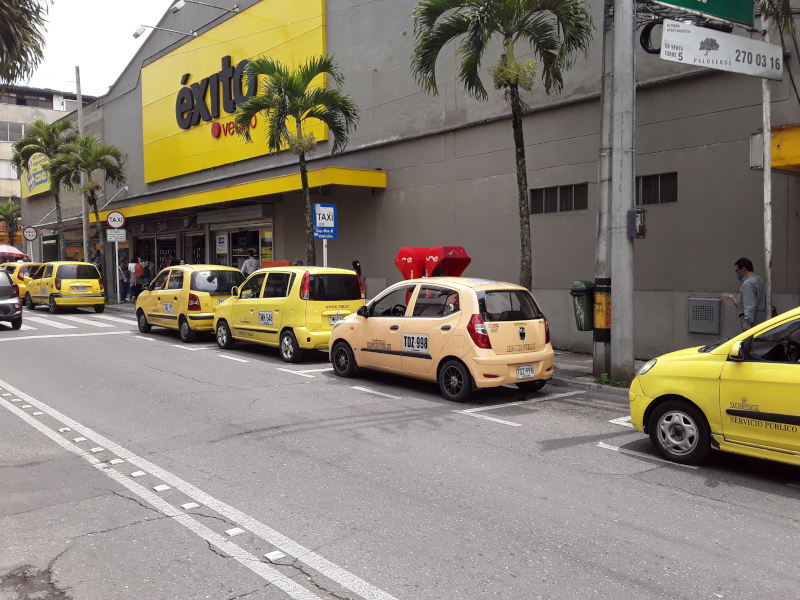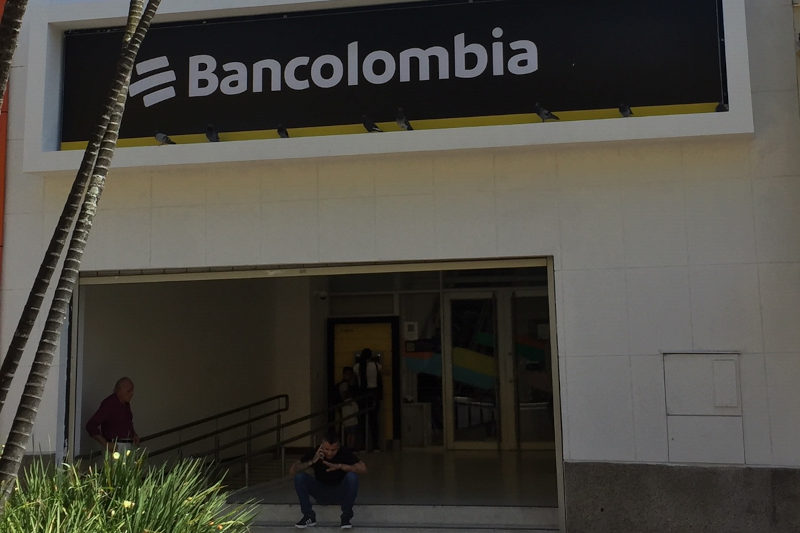Taxis are very affordable in Colombia. You could go from one end of the city to the other, say in Medellín, for under $10 US. You’re likely to spend $2 to $5 on most trips.
Taxi rates are usually set by the city where they operate, and they go up every year. You can find these fares on each city’s official website, and of course it’s all in Spanish.
Note that taxis in Cartagena, Santa Marta and Barranquilla don’t have meters, so the charges are set according to the zone traveled from (downtown for ex.) and the destination. Travelers frequently complain of being gouged in cities like these, so the usual advice is to look up fares before going and to set the fare with the driver before boarding.
Here are some key expressions:
- Arranque / banderazo: This is the preset amount on the meter (where there’s a meter) the minute you board the taxi.
- Carrera minima: The minimum charge you’ll pay even if the taxi goes only one block.
Know that the banderazo can vary in some cities if you’re going to the airport, and there may be small fees added for a slew of reasons which are just too complicated to sort through.
UBER / CAR SHARING SERVICES:
Some of you swear by Uber and its clones, largely because of their greater availability and much lower rates in places like the USA. We use them there as well, but know that in Colombia, the price difference is marginal and also that unlike in the USA, it’s actually illegal to operate a car sharing service. Uber and its local clones are using a loophole, classifying it as a car rental, which is legal. The driver may ask you to sit in front if you’re alone in order to avoid being stopped and fine. We’re not telling you not to use them, just that the reasons are less compelling here.
NOTES:
- There are lots of taxis and car sharing drivers in Colombia’s major cities, but when it rains and during rush hours (including Saturday), availability can fall next to zero, and normally courteous locals will swipe cabs right from under your nose when this happens! Consequently, you might want to plan your city travel for off hours, and if there’s a hint of rain, maybe change plans abruptly, unless you’re good with staying marooned for potentially hours! As you might expect, Uber rates go up with the demand.
- If you take a cab to a remote part of the city, for example a nature preserve, you might have a hard time getting back!
WARNING:
Driving in Colombia is chaotic and few road rules are respected. Taxi and Uber drivers are some of the worst offenders. Stop signs and crosswalks are always ignored, weaving through traffic at top speed, following too close, speeding through yellow / early red lights and so on. If a driver is minding the rules it’s most assuredly because there are traffic cameras that can snap their tags or because transit cops are present.
Expect a bumpy ride and total disregard for your comfort even with small children or pregnant women on board though there are some drivers that are beyond courteous, of course.
I’d be remiss if I didn’t mention the most insane road warriors, of which there are millions more than car drivers: motorcyclists. They seem to follow no rules whatsoever and routinely perform dangerous maneuvers. They pose a threat not only to themselves but to every other road user. Not surprisingly, they lead the pack in road deaths.
Add to the above the distractions many drivers bring upon themselves: texting or talking on the phone, watching shows, blaring music, all while zipping around in traffic. If you ask them to please concentrate on the road or to turn down the volume you may get a “how dare you” reaction, especially on the former.
Often passengers don’t have seat belts, either because they’re broken or stuffed deep inside the seat, but if there are working seat belts, you wouldn’t be stupid to use them!
That said, in over 15 years riding in taxis almost daily here I can only report one incident where a taxi I was riding in hit something when one backed up and knocked down a parked motorcycle. Thus I have to believe that although it may seem like insanity on the roads here, there’s not as many accidents as you might expect. I often joke that drivers here could get top scores in video driving games!
SAFETY:
The general recommendation vs taxis is to avoid hailing them on the street due to the small possibility they could be “gypsy” cabs.
There have been a number of incidents where cabbies led their customers to an isolated spot where they were robbed by accomplices and some where they blew scopolamine (the “zombie” drug) in a passenger’s face or offered hand sanitizer laced with it. Lastly, there are robberies of opportunity where two men on a motorcycle will ride up to your window and the one in back will point a gun at you and demand all your valuables.
However small the risk of any of the above happening to you, the local authorities advise that it’s better to call a taxi via phone or app, or use one at a regular taxi stand (acopio) which you’ll find inside or in front of many malls.
COMPLAINING:
If it’s a taxi, you can note the driver’s details and/or the vehicle’s tag and complain directly to the company he’s (very few shes) affiliated with. Although I have rarely made such calls, I do believe that in most cases they will reprimand or even sanction the driver. Note that many Colombians refuse to complain regardless of the gravity of the offense owing to a belief that the driver could retaliate against them.
If it’s Uber, you can give the driver a bad rating.
GOING TO THE AIRPORT:
We recommend using taxi companies that specialize in pickup and drop-offs at the airport. Using the regular city taxis can be dodgy for this trip, as this cowboy found out!
Happy riding!
Photo by Colombia Dreaming



